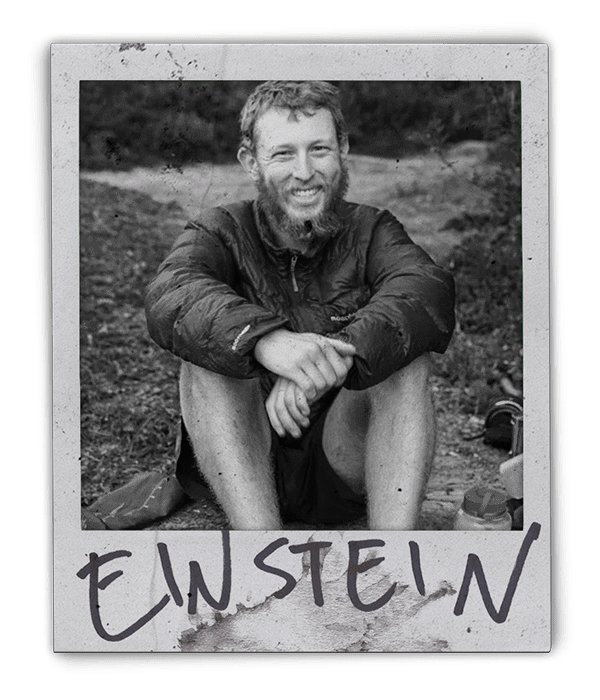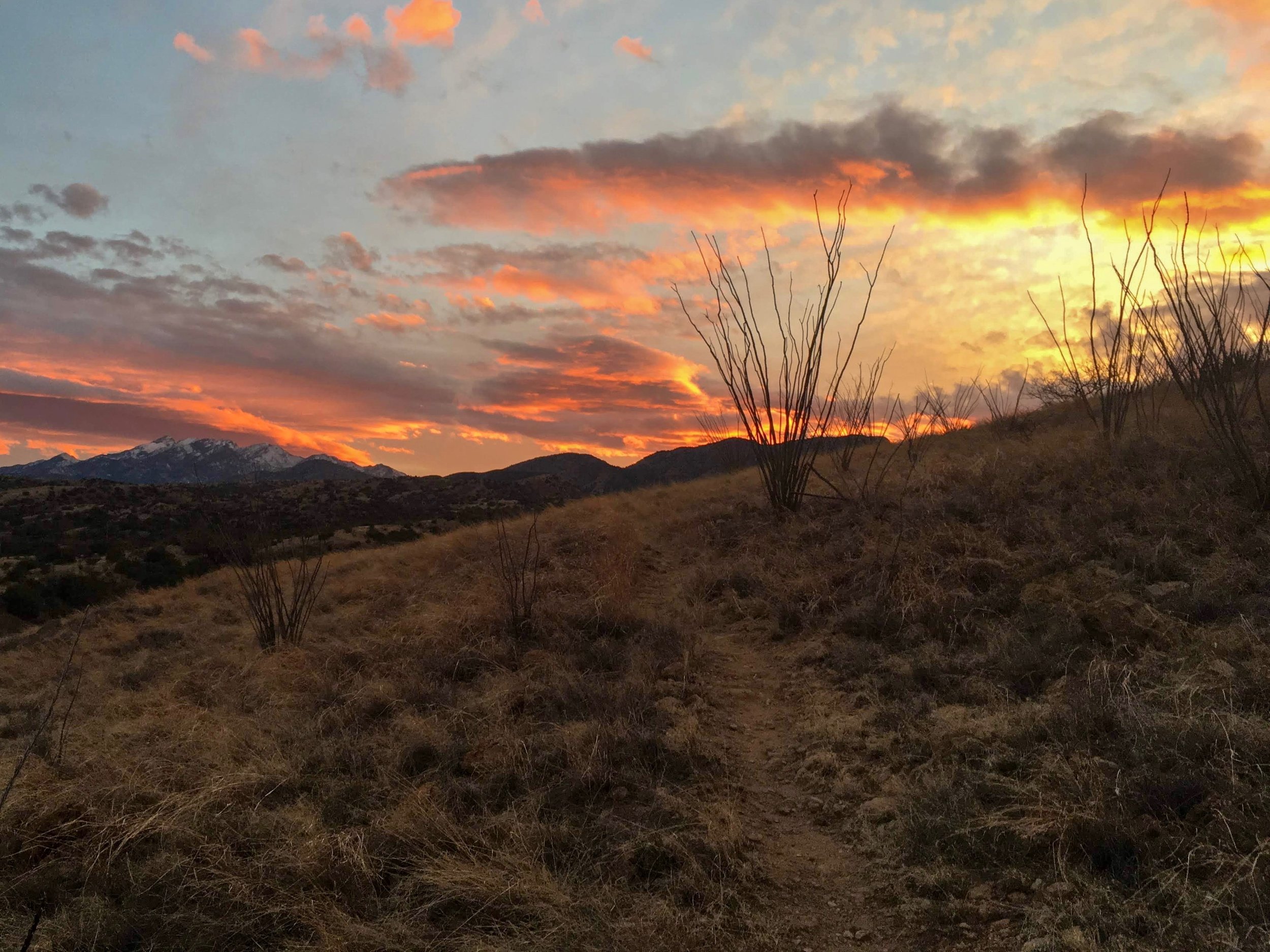Dealing with Failure on a Long-Distance Hike

Setting Goals
No matter what long-distance hike you have planned, you are probably starting the new adventure with a vision and a clear set of goals. When starting a new challenge, we can already see ourselves standing at the terminus of success. When a hike ends in the way we had envisioned, it can be one of the most overwhelmingly positive experiences of our lives. The pride in doing something so difficult and the feeling of accomplishment can be a huge confidence booster.
But… what about when our hike ends differently?
What happens when the last moment of a long-distance hike is not the triumph you had pictured before you began? What if it turns out to be something you hadn’t imagined, or worse, something you had feared - a disappointing failure.
That last sentence would be a pretty good description of how my Arizona Trail (AZT) hike ended. All of my previous hikes had begun with goals I was truly successful at accomplishing. My goal going into Arizona was not merely to finish - I decided I was going to attempt a Fastest Known Time (FKT) on the AZT.
Preparation
The current record was a one-way, self-supported FKT completed in 17-days (broken again in 2019). Attempting a sub-17 day AZT hike would have taken much more time and training, so I settled on a slightly more achievable challenge. The goal for myself was to set a self-supported FKT for doing a yo-yo of the trail ( A yo-yo hike ends right where it begins). This challenge was easier to accomplish, considering that only three people had ever completed a yo-yo of the AZT. The first FKT yo-yo hike attempt was held at 93 days. I decided I wanted to do it in 50 days.
In the months leading up to the attempt, I would spend every free moment preparing for the hike. I learned the route backward and forward before ever stepping foot on the trail. I came up with a foolproof resupply plan that would maximize my ability to put in miles while still maintaining a self-supported status. I stayed in peak physical shape by swimming and walking, averaging 8-12 miles every day. I worked hard to invest in converting my classic, traditional backpacking gear to an ultralight setup that would make it easier to hike bigger miles.
For two months, I lived, breathed, and slept the Arizona Trail.
I already had an image in my mind of how the hike would end. I thought I would triumphantly walk back to that same spot on the border in 50 days. Tears in my eyes, I would fall to my knees in celebration as I was going to do something nobody else had ever done before. Even if the FKT was not a relatively impressive one, it would be one nonetheless.
Experiencing Failure
If the opening tone of this article hadn’t already given it away, I’m going to spoil it for you. I did not set a yo-yo FKT of the AZT.
I could tell you all about the journey, but this article is not meant to be a trip report. The short story is that due to unanticipated winter conditions, I decided to end my hike at the Utah border. I hiked the AZT one-way in 24 days, which was on pace for my 50-day yo-yo goal. However, the winter conditions were merely the breaking point of why I wasn’t able to succeed. Physically, I probably could have turned around and done the trail again in 26 days or less - completing my goal. Yet mentally, the trail had beaten me. I was not prepared for the mental stress that an FKT attempt brings on a hiker. When I got to Utah, I couldn’t muster the strength to turn around and go back down to Mexico.
My AZT journey did not end the way I had imagined. It ended unexpectedly and in disappointment. Within three hours of getting to Utah, I had hitchhiked back down to Flagstaff and was already making preparations for leaving Arizona. Not 24-hours prior, I was in full hiking mode, with my dream finish still in mind. All of a sudden, my hike was over and I had failed. It was then, with that journey ending, that I began a new adventure.
That moment was when I started to figure out how to deal with the failure of a long-distance hike.
Confronting Failure
A big challenge for me was accepting other peoples’ reactions. Even after publicly announcing that I was unsuccessful, I received many messages of congratulations for just having hiked the whole trail. It didn’t make sense to me that no one was acknowledging how I didn’t succeed at my goals, and this made the sting of defeat affect me even more. In facing these congratulatory sentiments of which I felt unworthy, I learned to take ownership of my defeat. Nobody else could feel the disappointment I felt, so they still felt inclined, rightfully so, to congratulate me. Not settting the FKT for an AZT yo-yo (or even complete a yo-yo) humbled me. At 23, I had numerous successes in long-distance hiking, yet what I didn’t know then was how badly I needed to confront failure.
Lessons Learned
My previous success on the PCT got the better of me. My ego was more significant than it had ever been coming off of that trail, and I became intoxicated with the idea of an FKT. I had lost sight of why I started thru-hiking in the first place - personal growth, experiencing new places, meeting interesting people, seeking fellowship with the wilderness. They all took a backseat in my mind to hiking further and faster than other people. All of these goals are of equal worth, yet none are better than any other. In my case, I lost sight of the goals I truly cared about the most.
Success pushed me away from them. It was a failure that helped me find my way back.
Since finishing the AZT, I have re-discovered my passion for long-distance hiking in the spirit of adventure. The hikes I have done since then have still involved big miles every day, little rest, and generally trying to hike as fast as possible. That’s always been my style of hiking. Just taking the pressure off of trying to set an FKT has allowed me to enjoy them so much more thoroughly.
After leaving Arizona, I wasn’t excited about the other adventures I had planned. I thought I had ruined long-distance hiking for myself. However, only a few days off trail from my most recent hike, I am more in love with the sport than ever.
The lesson learned from my failure is to remain open. This means taking ownership of what may feel like short-comings in order to make myself stronger. By embracing failure, I now treat it with as much pride as my successes.
If you’re reading this, what’s your best way to deal with failure? How have you dealt with failure in the past, and how might you deal with it in the future?
No matter what your next goal in long-distance hiking may be, chances are you’ll have to deal with this dilemma sooner or later. There is nothing wrong with this. On the contrary, it has the potential to be one of the greatest lessons long-distance hiking can teach us.





